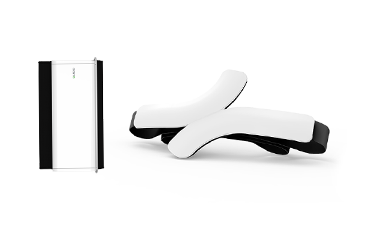Atrial fibrillation, also referred to as AFib or simply AF, is one of the most common heart arrhythmias today, affecting an estimated 1% of the population. It’s mostly detected in adults over the age of 60 and the risk of developing atrial fibrillation rises with the presence of other chronic conditions such as high blood pressure or diabetes. It’s the leading cause of stroke so detecting and managing is truly important.
What are atrial fibrillation and arrhythmias? Check out our guides ”Let’s talk about (abnormal) heart rhythm” and ”What is atrial fibrillation? Risk factors and symptoms” to learn more.
Is atrial fibrillation life threatening?
Whether a person has symptoms of AF or not, the condition greatly increases their risk of stroke – making someone with atrial fibrillation five times more likely to have a stroke than someone who doesn’t. Atrial fibrillation can even lead to heart failure. Given how serious the complications of AFib can be, early detection and diagnosis is paramount.
How is atrial fibrillation detected?
Atrial fibrillation is detected and diagnosed as the result of a test called an electrocardiogram (ECG or EKG) that records the heart’s electrical activity. Because Atrial fibrillation occurs irregularly, the short ECG a doctor would typically perform in-office is unlikely to detect it. For this reason many healthcare providers use Holter monitors to observe their patients’ hearts over a longer period of time, usually over the course of several days or a couple of weeks.
What’s the best way to detect atrial fibrillation?
Traditional ECG recorders and Holter monitors require intrusive skin preparation, professional fitting in the doctor’s office plus the use of wires or patches, they are not easy or comfortable to wear long term. Qardio has designed QardioCore, the world’s first ECG/EKG monitor that doesn’t require wires and patches, can be used at home and is gentle to your skin. It works with your iPhone or iPad and is worn comfortably under your clothes the same way you would wear a fitness heart rate monitor.
If you have a genetic predisposition or are at a higher risk of developing an arrhythmia due to existing chronic conditions, QardioArm and QardioCore were designed to make it as easy as possible for you to detect and manage most heart conditions including atrial fibrillation. QardioArm is the only blood pressure monitor that records a history of detected irregular heartbeat, which can be a warning sign of arrhythmia. QardioCore is the world’s first ECG monitor to allow for the continuous screening and managing of heart conditions without the need for a prescription and a doctor’s visit.
Source:
American Heart Association




